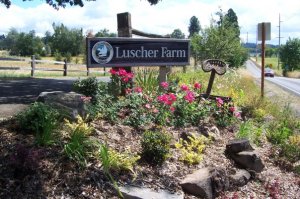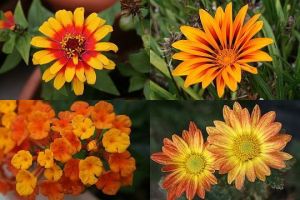Nature seems to take our breath away. Whether it is the sight of the Adirondack Mountains from the summit of Dix or the sunset over the Chesapeake Bay from Thomas Point, the beauty of nature takes our breath away. Even New York City native urbanites take pride and find pleasure from the nature in Central Park. Yet in our fast-paced, technology infused, world, we find it difficult to secure time away from the 9-5 to explore and admire the natural world around us. If only there was a way to combine the beauty of nature with the constant callings of our rushed city lives…
In a city, such as NYC or DC, there are many “dead” spaces, such as concrete roofs and walls of buildings, that provide nothing but support for the building. Here, we present to you a symbiotic relationship between city and nature. Green roofs and green walls are becoming more and more popular with environmental activists and businesses looking to reduce long-term costs and improve the environment around them.
What are green roofs and walls?

Green roof on Chicago City Hall

Green wall in Paris
In a nutshell they are the product of taking inanimate flat surfaces and turning them into living, breathing, pieces of art that benefit the environment and society. They are soil based structures that can contain many different species of plants, depending on what your ultimate goal is. Most green roofs are made up of very resistant plants that do no require much attention. These plants are most often Sedum, which are small, brightly colored flowers that attract butterflies and and honey bees (oh how important!!) as well as being drought resistant and low maintenance [1]. But don’t let that hold you back. Depending on the resources you have at your disposal, there are intensive green roofs that can contain a high variety of plants even including medium to large trees!
Not only are green roofs and walls aesthetically pleasing, but they contain many environmental, economic, and social benefits. The below list of benefits is paraphrased from page 2 of the Green Roof Toolkit put together by the Anacostia Watershed Society (AWS).
Environmental:
– Creation of wildlife habitat
– Reduction of storm water runoff into watershed areas
– Reduction of urban temperatures in hot weather
– Improvement of the air quality
Social:
– Creation of desirable green space
– Provide an aesthetic appeal to urban landscapes
– Provide more space for growing food
– Educational space to teach young children about the environment
Economic:
– Provides sound insulation for the building
– Monetary credits for storm water impact
– Increase of property values
– Decrease in energy costs
– Reduction of waste and landfill usage
– Increases the life of the roof
Wow! Such benefits! Would you believe me if I told you that not only do you and your city get to reap all of these benefits, but some cities such as DC are offering subsidies to help with the costs of green roof construction! The District Department of the Environment (DDOE) is currently offering a green roof rebate program that will pay $7-10 per square foot to

Green wall on PNC headquarters in Pittsburgh, PA
incentivize people to invest in green roofs [3]. Even better is that the Anacostia Watershed Society is working in tandem with the DDOE to increase the subsidy to $15-20 per square foot!
If you live in the district and you have an interest in remodeling your roof, contact the AWS. They will work with you to find a contractor and a price that fits your resources.
Green walls are not only for the individual household. They can also be great ways to advertise and market your company or product! As you can see on the right, PNC headquarters in Pittsburgh has taken the concept to a beautiful level with the green wall on their building. This green wall, the largest in North America, is 2,380 square feet with over 14,000 living plants! [4]
Nature is a beautiful thing LGBG followers. So, with the mounds of benefits and the lovely aesthetics of nature in our concrete jungles, let’s work as one to push for green roofing and walls throughout our country!
Resources for this article:
[1] http://www.bhg.com/gardening/plant-dictionary/perennial/sedum/
[2] http://green.dc.gov/sites/default/files/dc/sites/ddoe/publication/attachments/GR%20Toolkit%2012.22.11.pdf
[3] http://green.dc.gov/greenroofs
[4] http://www.jetsongreen.com/2009/09/the-largest-green-wall-in-north-america.html







